Welcome to the CPL blog where we bring leading-edge thinking and stories of purpose in action. You can count on learnings and brilliance gleaned from our work with Purposeful Leaders around the globe. As authors of The Art of Convening™, we explore how convening brings your purpose alive.
Summer Inspiration: Celebrating Our Amazing Interns
/What a blast we’ve had this year with 3 of the most talented and inspired interns in CPL history:
Read more about Lily, Shea, and Kayla here.
Read MoreEssential Conversations: 5/3 Weaving Threads of Grief & Joy in Times of Unraveling
/On Monday, May 3, join us to explore “Weaving Threads of Grief & Joy” in an Open Space Format
Through the magic of Zoom rooms*, you can self-select to choose the focus that interests you for a "deeper dive" conversation.
Read MoreEssential Conversations: A Month of Purpose
/Gather each Monday in March for an essential conversation to “The Path of Purposeful Living” with Richard Leider, founder of Inventure – The Purpose Company.
Richard is ranked by Forbes as one of the “Top 5” most respected executive coaches, and by the Conference Board as a “legend in coaching.”
Read MoreEssential Conversations: The Hearth, Indigenous Wisdom
/Gather each week for an essential conversation to Explore the Heart of the Matter.
Read MoreCraig on tough situations when convening/hosting a meeting!
/Photo Credit: Craig Neal
During a recent Art of Convening Training, some potent questions about convening skill and strategy were asked. In this video, Craig addresses some of them. (some are listed below)
<•> When leading a work meeting, if there is an argument or discussion that has not been resolved, should we allow time for further discussion to have a harvest or find inspiration or follow the agreed upon timeline?
<•> What if I’m not leading/hosting/convening? (I'm just a participant)
<•> When leading a work meeting or conference, if participants start arguing or loudly disagreeing, what shall I do? How do I keep inner calm and access my true power?
<•> Would you share some examples of how to respond when people challenge you during your convening?
Let us know your thoughts!
Great Meetings - The Recipe: Part 2
/PHoto Credit: Daniel Scotton
Any convened meeting, gathering or even a conversation has at its core practical ingredients or “principles” that are essential to the creation of a safe and generative engagement leading to powerful outcomes that engage everyone.
As the convener, you have the unique role of creating the recipe then to lead or facilitate people through the engagement AND to introduce the essential ingredients that will inform and assist in achieving the desired outcomes.
Any great meeting like a recipe only uses the best ingredients:
Starting with positive intent, the convener approaches each engagement as an opportunity to create possibilities. Suspending certainty allows for what we don't know to come alive. We then listen for the wisdom in each voice and understand that slowing down the conversation will allow the spaces for creativity and innovation to occur. By hearing all the voices and perspectives we invite diversity and inclusion into the conversation. Then by looking for new ways of thinking and being, we are open to surprises and to new possibilities.
Five Most Common Convening Mistakes (and How to Avoid Them)
/Photo Credit: Craig Neal
"Convening is about being open to relationship rather than closed. It is a challenge to choose to stay connected and open when our lives and schedules are full and our time is precious."
By Jeevan Sivasubramaniam, Managing Director, Editorial, Berrett-Koehler Publishers Inc.
Craig and Patricia Neal have been organizing gatherings and meetings for decades across the nation and have a pretty solid idea of what works and what doesn't. However, even seasoned conveners still make mistakes when bringing people together or forget what really matters.
In this entry, Patricia and Craig list the Five Most Common Convening Mistakes (and How to Avoid Them):
1. Not "Staying Connected": Convening is about being open to relationship rather than closed. It is a challenge to choose to stay connected and open when our lives and schedules are full and our time is precious. Stay connected by knowing who you are and how you want to be in relationship with others. You always have a choice when you walk into a meeting: do you want to be connected, or stay closed? Choosing connection can lead to collaboration, creativity, purposeful outcomes.
2. Fearing Rejection: The fear of rejection can derail our ability to extend a wholehearted and sincere invitation. Invite often - for all kinds of things - and experience acceptance and rejection as others’ freedom to choose rather than a personal success or failure. We often think that colleagues are too busy to talk beyond the cursory business at hand, but when we persevere, people are grateful for the opportunity to catch up and reconnect. Our fear of rejection, rather than rejection itself, was holding us back.
3. Making Assumptions: We say “assume and doom.” When we assume others know what a gathering’s all about, we put our gathering squarely in the realm of the unknown. Make the purpose and desired activity for a gathering as clear and explicit as possible - even if it seems unnecessary. At one important meeting, knowing we had only an hour, we jumped right into the action items. We neglected to set the context, assuming we were all on the same page. At the end of the meeting, people had different understandings of the purpose of the meeting and were not aligned in a commitment to action.
4. Reluctance to Impose Our Will on Others: “You’re not the boss of me!” How often have we said or heard words like that? But providing structure, environment and terms of engagement is a crucial part of convening. People need structure. If there is no structure, people look to create it. At a recent family gathering, we felt we should not be too controlling, but this led to a lack of clarity in stating the terms of engagement or agreements for a discussion. Everyone jumped in, in their own way, with cross-chatter and began talking over one another. It would have been better to state our expectations ahead of time to enable all people to be heard.
5. Impatience and Judgment: The compelling desire to “Just get on with it!” can rush us obliviously past the most important pieces of wisdom and capability present in our gathering. Remember, anyone included is equally important and essential. At the beginning of most meetings we do a check-in to hear from everyone. This one time we were 15 minutes late. we suggested we skip the check-in and move right into the agenda. Halfway through the meeting we realized we didn’t have everyone’s attention and didn’t have the necessary alignment to make important decisions we were there to make.
There are actually four other scenarios that generate obstacles for effective convening but we chose the five most common. What do you think? Did we choose the five most common? Do you have any feedback or ideas for us?
Stay tuned for the next article on 5 Things that Work and Matter.
Purpose Moment
/#PurposefulLeadership #Purpose #Leadership #Convening #ArtofConvening #Engagement
Work/Life Expo was an impactful day
/"Creating a New Story for Work/Life: No More 'Business as Usual'"
Vivian Jenkins Nelsen and I really enjoyed participating in a fantastic day of visionary and practical stories and learning experiences at the 2017 Work/Life Expo. Our workshop topic was:
"Be a Purposeful Agent of Change in Your Organization: E.Q. for Leaders". We covered a rich list of topics from "The Business Case for Trust," one of Vivian's favorite subjects to the ROI of Purpose and Engagement for powerful collaboration. Contact us if you'd like to know more!
"At the heart of the matter is purpose. Recent research shows that a sense of purpose, not a specific set of characteristics, is the key to successful leadership. How do purpose and emotional intelligence work together? How do you find or align your purpose with your leadership? How can this transform your leadership and your team or organization? Thriving cultures create higher ROI and engaged people. Engagement is about linking life's purpose with work that matters. Engaged people are happier, more alive, productive and collaborative. Having a clear purpose is the key to successful leadership and thriving organizations."
We covered trust, EQ/emotional intelligence, CI-Q/conversational intelligence, neuroscience of connection, purpose, purposeful leadership, engagement, meeting design-- an amazing amount of information in a short amount of time.
Coming Out Party for Center for Purposeful Leadership!
/Photo Credits: Eric Todd, Atomik Productions
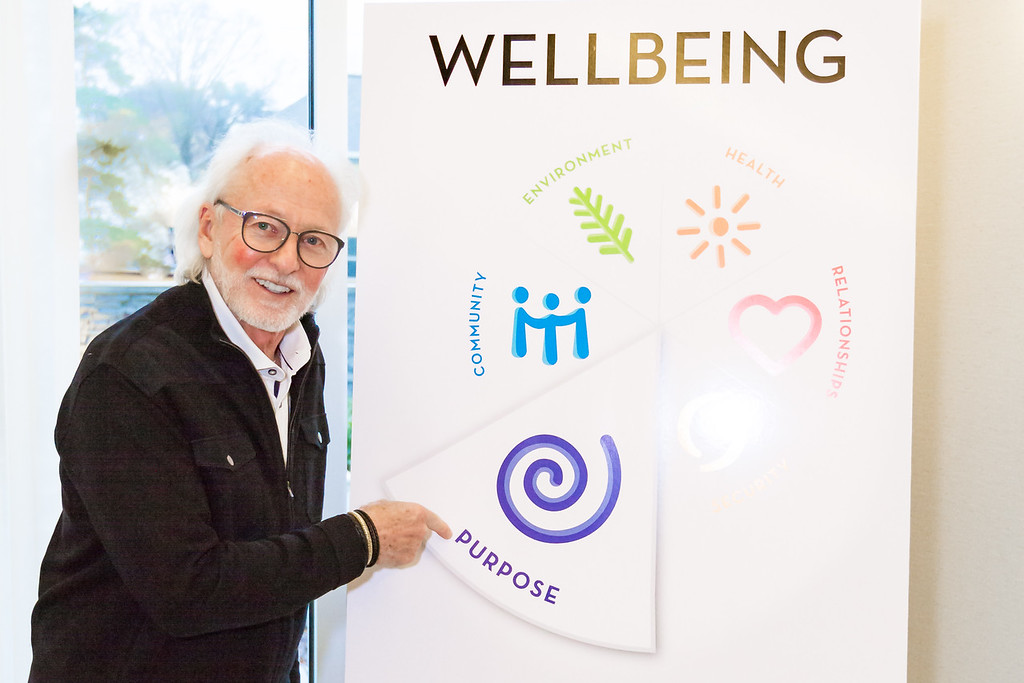
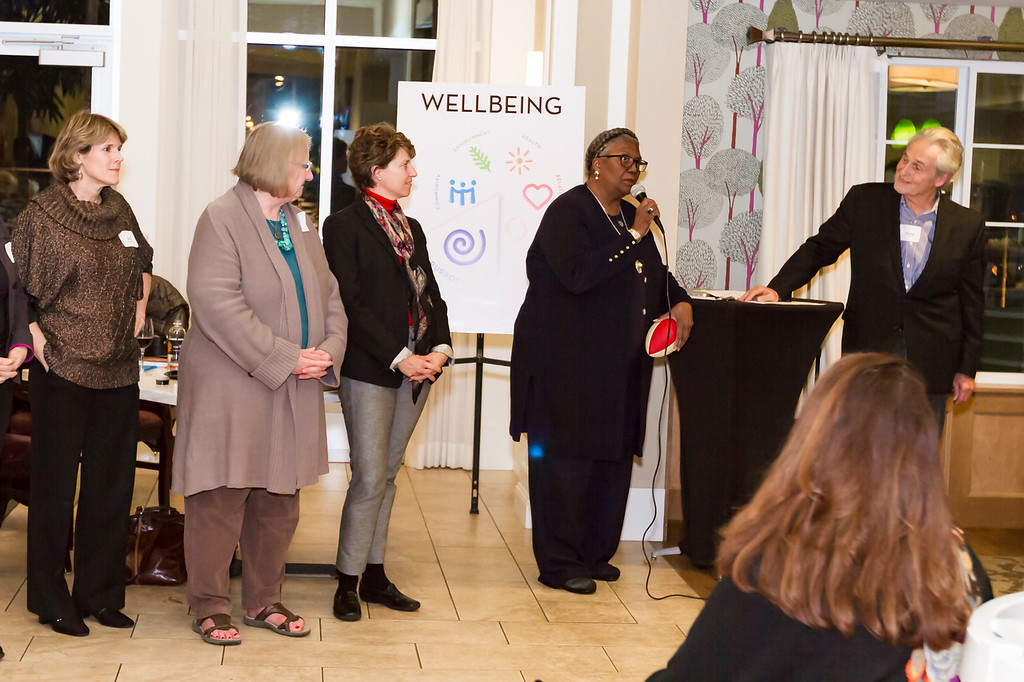
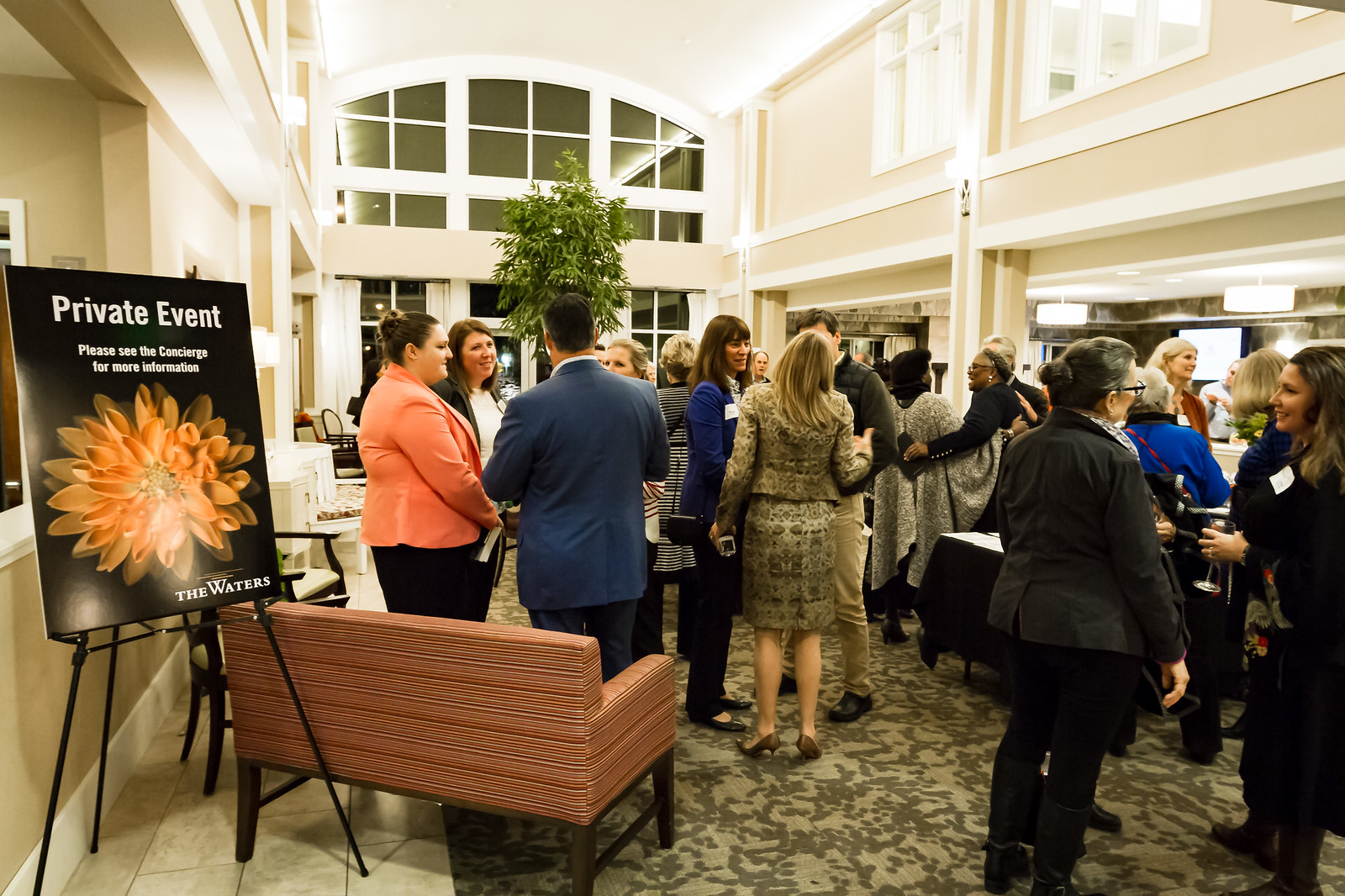
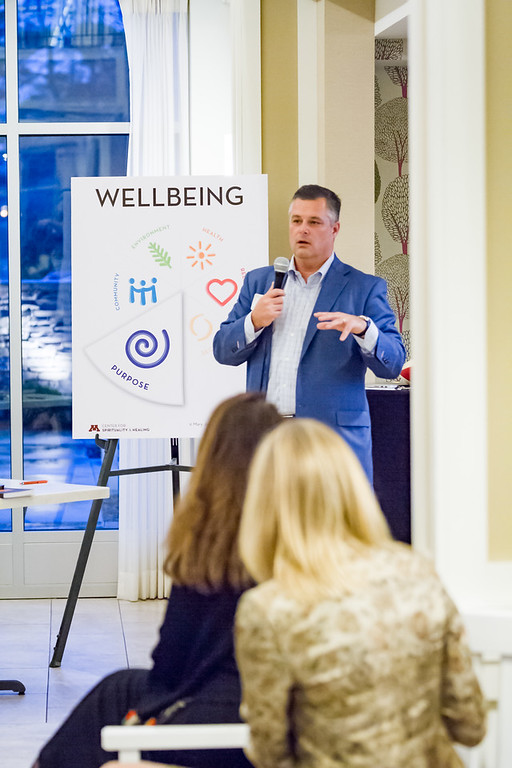

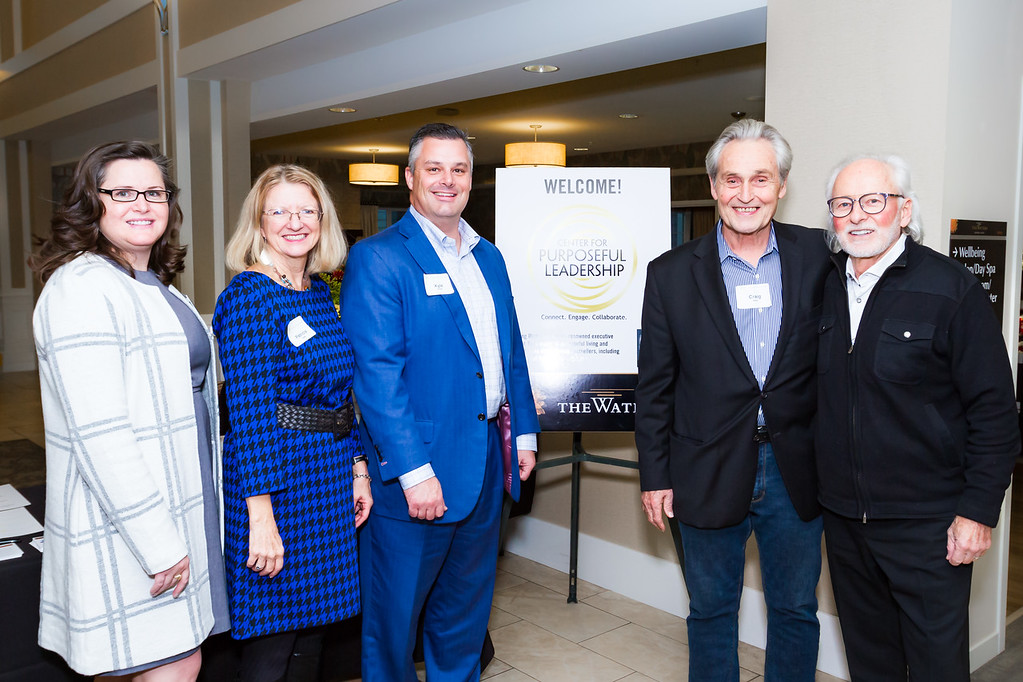
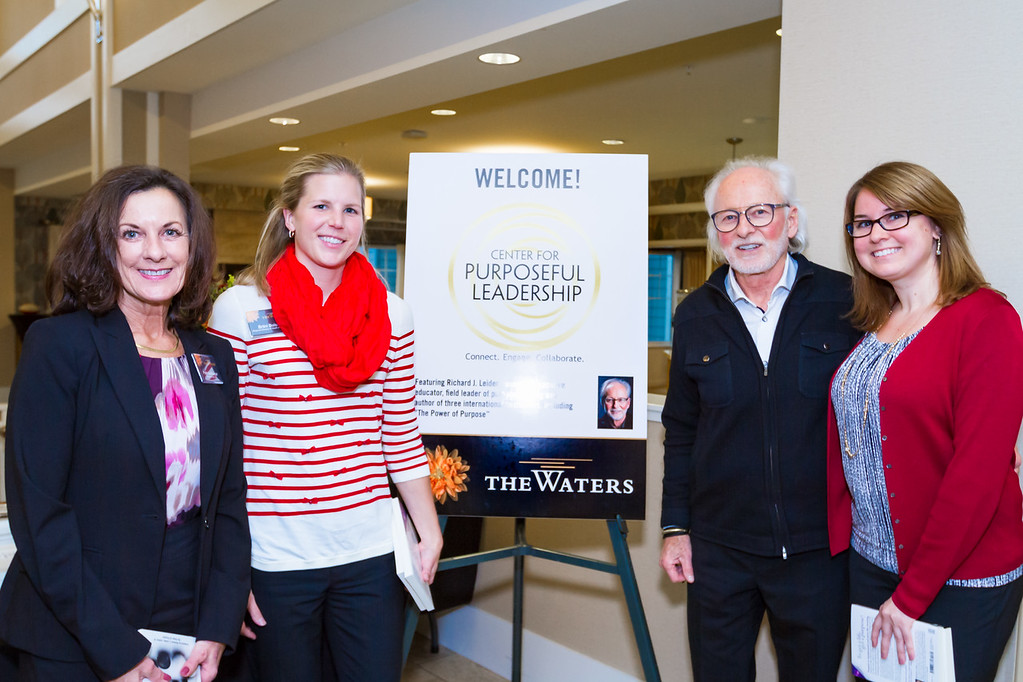
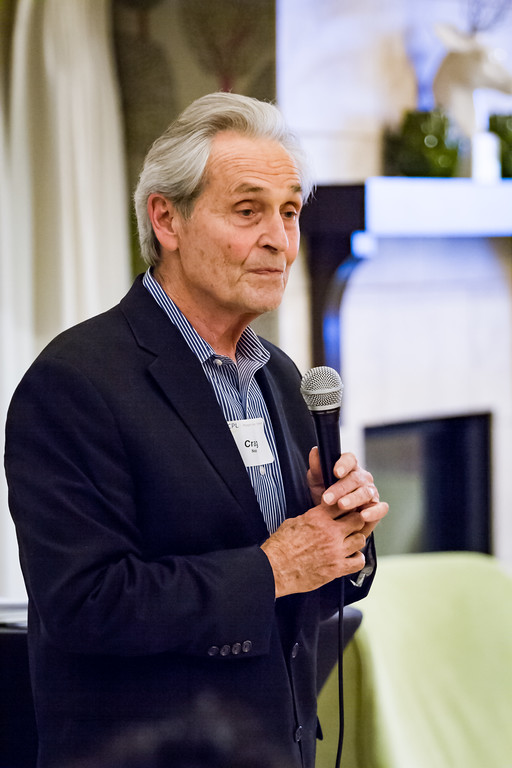
Richard Leider
Click here for photo album by Eric Todd, Atomik Productions
Katherine Todd, Patricia, Kyle Didier, Craig, Richard Leider -- Center for Purposeful Leadership Team
Center for Purposeful Leadership hosted its first reception to convene and connect with 50+ colleagues and introduce the CPL Team.
Purpose leader Richard Leider spoke on the Purpose Movement and current research.
We were hosted by The Waters Senior Living leadership at The Waters on 50th.
The Waters leadership embodies purposeful leadership. Thank you to Kyle Didier, Lynn Carlson Schell, Katherine Todd and The Waters for hosting, and to those who attended.
Gathering with so many thought leaders truly shows the great direction purposeful leadership is headed.
Claudia Eisinger, Vivian Jenkins Nelsen, Lynn Nelson, Cindy Wold, Kim Kristenson-Lee, Rachel Harris, Barbara Shipka, Eric Todd, Sarah Flores, Mark Fawcett, Patricia Neal, Craig Neal
Lots to talk about!
Richard and The Waters team
Advancing Your Convening Skills
/by Rachel Harris
Photo Credit: Craig Neal
Once you have gained and practiced the skills from the Art of Convening, the learnings and processes don't stop! Leadership is an ongoing learning process full of new information every day. Convening skills support engaged, effective leadership. In order to see the most improvements in your convenings, how do you continually advance your skills? It's always about intent; sometimes it takes a little extra courage. Below, we provide insight to an encounter with one of our clients and how we helped them further their convening skills.
A client contacted CPL for a consultation on developing and conducting a meeting for 300 people.
This client had previously taken the Art of Convening Training and heard about the concept of suspending certainty. He inquired about how to practice suspending certainty in an upcoming meeting for an international audience.
Here is what he learned: Practicing suspending certainty is one of the subtle methods that greatly advances your convening skills in conversation. Within the Art of Convening training, we employ these techniques for suspending certainty.
- Listen for the context and value of the conversation.
- Be Inquisitive. Notice and utilize opportunities to ask for clarifying questions before responding with an answer.
- Be patient. One of the ways to practice suspending certainty is to think about the times when you are asked a question and notice if you have any tendencies to respond quickly with an answer. Sometimes the person asking a question, in fact, wants to be listened to while they talk out loud and come to their own conclusion.
- Set the tone of the meeting withagreements. Create an open floor; invite attendees to notice judgments and speak for their self. Invite attendees to discuss and voice their opinions.
Incorporating these practices will assist you in adopting suspending certainty in your meetings and conversations. These four steps will also help to improve the value of your meeting by creating an open environment where your attendees feel welcomed. A welcoming setting creates a platform more people to engage and discuss.
Are you looking to improve and advance you convening skills? Check out CPL's training programs here to get started today.
#PurposefulLeadership #Purpose #Leadership #Convening #ArtofConvening #Engagement
Purpose Moment
/#PurposefulLeadership #Purpose #Leadership #Convening #ArtofConvening #Engagement
Purpose Moment
/#PurposefulLeadership #Purpose #Leadership #Convening #ArtofConvening #Engagement #TrueNorth
Transformational Leader Updates: Where is Richard Leider now?
/photo credit: craig neal
In October 2016, Heartland/CPL celebrated its 20th anniversary with Uber Master Coach Richard Leider. Richard, a longtime friend of CPL and best-selling author of The Power of Purpose, spoke to the top 3 lessons of the meaning of purpose:
- Purpose is a Choice
- Purpose is an aim outside yourself
- Purpose is a practice
Richard’s definition of Purpose: "Your aim or goal. Your reason for being. Your reason for getting up in the morning." In leading others to their true purpose, Richard poses these 3 questions to ask yourself for self-discovery:
- What do I stand for?
- What won’t I stand for? What are my values, boundaries?
- Who do I stand with?
Since we last saw Richard at our conference, he continues to coach and speak on finding and leading a purposeful life. At a leadership breakfast in February, Richard spoke about the power of purpose and how to activate your purpose daily. Richard also spoke at St. Cloud’s Well-Being Summit, addressing the importance of “Working on Purpose. Living on Purpose. Leading on Purpose." Later in February Richard led a Webinar on Repacking On Purpose focusing on life transitions.
cpl is fortunate to have a friend as visionary, influential and inspirational as Richard. Check out Richard's foreword to our book The Art of Convening. If you or your organization are interested in convening with more purpose, call us today at 612.920.3039 to begin your journey. For more updates on CPL and other leaders in the community, connect with us on our LinkedIn page.
Report from the Field: Convening and Flushing Your Toilet
/"Over 30 years I have come to learn that we need to protect the environment WITH you, not FROM you."
Welcome! This is the first in a new series on creating purpose in your life and work and how leaders convening with purpose create the outcomes you want. Let's get to it..
Bet you never thought about what happens when you flush the toilet or watch the water go down your sink. Bob Nordquist not only cares, but has created a unique workshop for customer engagement in a 3.5 million population system. Watch Bob tell his story about how he implemented a recent successful workshop using convening skills, focused on purpose.
In this segment, Craig Neal interviews Bob Nordquist, Industrial Waste and Pollution Prevention Manager at Environmental Services in the Metropolitan Council of the Twin Cities, and Art of Convening graduate.
Click here to watch video [6:39 minutes]
#PurposefulLeadership #Purpose #Leadership #Convening #ArtofConvening #AuthenticEngagement
StoryNotes
Craig: Tell me a bit about your position at MCES
Bob: I am the Industrial Waste & Pollution Prevention Manager. With a staff of 30 engineers, scientists, technicians and administrative staff, we issue and administer permits to over 850 Industrial Users of the sanitary sewer system, to protect the rivers of our region and our facilities, sewer workers and the public health. We do this by controlling the discharge of pollutants to the sanitary sewer.
Craig: Frame the IW workshop – purpose/intent/goals
Invitation? How did you frame? Why should they come and how many did come?
Bob: I opened the workshop by telling our Industrial Users that I came to this job 30 years ago, fresh out of college and eager to protect the waters of our region and that my attitude at the time was that I had to protect the environment from – you the Industrial Users. Over 30 years I have come to learn that we need to protect the environment WITH you, not FROM you. This shows our overall purpose – to invite the Industrial Users, our customers, to join us in collaboration to meet a common goal. The goal of the workshop was to show that this was an actual, tangible change and not just lofty words.
Craig: Tell me about the format and how it was different than the past workshops – what was unique?
How was the physical space different and how did you create the container?
Bob: It was a conversation rather than a lecture.
The first change we made was to the name of the event. For sixteen years we had held an annual Industrial Customer Forum. There was a lot of PowerPoint to present our rates for the next year and a few slides on what was new in Environmental Regulations. There was a short question and answer session, but the meeting was held late enough in the year, that it was unlikely anything would change, especially concerning the rates. Our attendance had dwindled to the point where only 12 people had shown up in the previous year.
This year we changed this to an Industrial Workshop and we held it in April. We had an idea what next year’s rates were going to be and we knew what was driving them, but they were not ready to propose yet. We set this up so that after a short introduction to tell people what to expect about the format, and to stress our commitment to action, we pulled the dividers in the meeting room and broke into two small groups – one for financial issues and one for regulatory issues. We sat in a circle with a facilitator and introduced topics, then encouraged our customers to share their thoughts. We had a staff member recording the notes on large easels.
Another change is that prior to the actual workshop we hosted an open house, with informational tables with staff to answer questions and promote conversations.
Craig: Tell me about the outcomes/learnings for you personally and for ES.
Bob: We learned we have willing partners. I learned to take a risk. I learned a lot about my staff and how professional they are.
I'm interested in the “listening session.” Why was that important and how did you create the comfort?
Bob: We had specific comments in several areas that we are working on addressing. These areas included financial topics and showed that there was interest in looking at evening out some of our fees and making them more transparent. There are teams working on these now and stakeholders that we need buy-in from before I can get more specific.
We did learn that our customers appreciated the honesty and commitment to action that we demonstrated in this process. They were also pleasantly surprised with the format, in that they were expecting to be lectured to again, but instead, we sat back and listened. Not that education isn’t important and there are important things they need to know about us, but we’ve done that for years. It was time for us to listen to them.
The other thing we learned is that we need a bigger room or more of these sessions. Instead of 12 people we had over 50. That tested the limits of our facilities and staff, but it probably added to the energy and enthusiasm with which staff and attendees approached this.
Craig: Tell me about how the Art of Convening may have played a part in the success of the workshop.
Bob: I think Art of Convening played two important roles in our success. First, it gave us a wider range of tools to consider as far as creating the container and hearing all of the voices. And second, it gave us a structure to follow to make sure that with this radical change, we weren’t forgetting a vital step.
Art of Convening gave us gave us a checklist to follow using the Convening Wheel. The Invitation, understand what's At the Heart of the Matter, what is a real Commitment to Action. During the planning stage of this meeting, you and I talked about a commitment to action as the most important takeaway.
If we go through this whole process and get the comments we were seeking, it was going to come back and bite us if our customers feel it was a waste of their time. We committed to presenting the results to the Executive Team, but that ended up being unnecessary. Most of the Executive Team, including the General Manager was at the workshop and actively participating and listening.
Thank you, Bob, for your time and commitment to organizational excellence at the Met Council! Stay tuned for future vlogs in this series!
Interviewing Craig Neal on Leadership
/photo credit: AtomikPhotography
"I am inspired by people who have gone through enough in their lifetime, a crucible event perhaps, that they are ready to make shifts in their lives."
Edited by Rachel Harris & Sarah Flores
Craig Neal on Leadership, 2017
Recently, CPL had an opportunity to sit down with Craig Neal, co-founder of Center for Purposeful Leadership (CPL) formerly Heartland Group. Craig Neal celebrates life as a passionate change leader, publishing executive, author, trainer and executive coach to those called to create profound contributions in their life and work. As an executive coach for over 20 years, Craig assists leaders to integrate their inner calling with maximizing their organizational leadership potential. He also founded the Thought Leader Gatherings (TLG), a membership based leadership community which served over 800 companies and 4000 leaders in its 18 consecutive years of convening. The TLG lead to the Art of Convening training series and eventually to the publishing of the Art of Convening book with his wife and partner Patricia in 2011.
Craig's passion for the wilderness and being among men transforming their lives and personal visions led Craig to create the Men's Wilderness Journeys. These "inventure" trips into the pristine Boundary Waters Canoe Area of Northern Minnesota and Canada combine deep inner exploration with wilderness experience and skills training. Insight into his extensive network and thought leadership can be found at Craig Neal’s LinkedIn or http://centerfpl.blogs.com/artofconvening/. Find the interview here:
CPL: What inspired you to co-found Heartland?
CN: 20 years ago, as publisher of Utne Reader, I had access to a plethora of leading-edge information, I saw and experienced a sea-change occurring in the world. It was the mid-90s, the world was getting smaller due to the rise of multinational corporations, personal access to computers and therefore greater flow of vast amounts of information to individuals. As an early subscriber to the Whole Earth Catalog, I was struck by the cover quote “We are as gods and we might as well get good at it.” on the 1st edition in 1970. What that meant to me then and now, is that, as humans, we have a tremendous opportunity to contribute to and shape a different future than the one I was experiencing.
I realized that leaders are the conduit and organizations a delivery system through which a global renaissance could occur. Where there is a shift in consciousness and how we, as leaders, can lead in a way that brings meaning and purpose to those around us. This could contribute to a world that works for all in my lifetime. What a goal! What an outrageous concept!
CPL: What does a world that works for all look like?
"CN: People are engaged in meaningful work, at whatever level that is, have enough to eat, are socially and spiritually nourished. We care about one another’s well-being."
Seeming complex, it is a simple shift in consciousness. From resignation of what is, to the possibility of something bigger and a benefit for all.
So, since leaving Utne and starting CPL, my vision and mission have been to support leaders to awaken their life’s purpose and responsibility, we could be conduits for this new way of thinking and being.
Heartland was formed to serve and support those leaders in transforming themselves and their organizations for the sake of a world that works for all.
CPL: In your varied career, including Publisher of Utne Reader, and then co-founder of Heartland/CPL, you’ve had the opportunity to work with and coach some amazing people spanning many disciplines. Who has inspired or does inspire your leadership?
CN:I am inspired by people who have gone through enough in their lifetime, a crucible event perhaps, that they are ready to make shifts in their lives. There is a humility to when you know you don’t know all the answers, are vulnerable and willing to live with ambiguity, but you are open to possibilities. People who have or are reaffirming their values. Their non-negotiable values.
CPL: As a thought leader and visionary, what captures your attention these days?
CN:I consider myself to be a fellow traveler, just as deeply confounded about what is going on in our world, as anyone else. I AM willing to step forward, to be engaged, accountable and fierce in what I stand for.
We are at an inflection point globally. On the precipice of what Marshall McLuan called a “paradigm shift.” The world, as we know it, is basically in free-fall. The institutions and belief-systems that have carried cultures for so long are under siege.
What is interesting to me are the people who choose fear and the people who choose life and love. What do we choose? Fear or love? There are definite paths for both; that’s what makes life interesting!
CPL: As co-founder of the Thought Leader Gatherings, then Transformational Leaders Collaboratory, you’ve enjoyed 18 years of coaching leaders into their authentic voice. You have worked with some of the brightest minds in the Twin Cities and Bay Area and beyond. You have developed a thought leadership following. Looking into the future, what are some trends on the horizon?
CN:The role of “high tech vs. high touch”, a cultural dichotomy, that first emerged 30 years ago, is now a global challenge in every form of society. How we navigate the speed at which technology is expanding with the skills of human development may be the ultimate frontier for humanity.
Do we see the world as threatening or nurturing? Do we see ourselves resigned to the status quo or what we know, or are we willing to step outside and beyond to live with courage in a new world, where the boundaries have yet to be set?
The questions of Purposeful Leadership, a purposeful life: Who are we? Why are we here? What are we to do? Are we willing to lead?
Leadership isn’t a thing; it is a state of being. Are we willing to step forward in these times to make a difference? Are we willing to be engaged?
CPL: It takes courage to have a vision and courage to found a company. It also takes courage to lead a group of men into the BWCA! How has courage played a role in your position as company co-founder?
CN: To live each day from a core life’s purpose, with the conviction that I am contributing to the best possible evolution to the unfolding of an unknown future, takes courage. I’ve not always felt acknowledged, and at times have felt either ahead or behind the curve. My ego has often taken a hit. Having a stake in the ground and acting upon what is in my heart, takes I courage. It’s not necessarily comfortable, but it is what gets me up in the morning.
CPL: What else?
CN: I love to work with leaders and organizations that feel they have tried everything to solve their problems and still wish to keep going into unknown territory. This is when it gets interesting. The stakes are high. That is when people are open to possibility, vulnerable and willing to live with ambiguity. This is the work I love.
To see more of Craig’s leadership work, follow us on LinkedIn and subscribe to our blog.
Transformational highlights from the 12/2 Transformational Leaders Circle (TLC)
/Photo Credit: Craig Neal
by Patricia Neal
Innovation and Transformation to be on the Right Side of History: Purpose, Profit, Planet
Did you miss the TLC in December? Here are some highlights:
Minnesota’s largest energy co-op, Great River Energy, brought a story of courage and transformation to the December TLC. The story involved a rough patch in 2013 regarding the movement from dependence on coal to a more renewable energy approach in electricity. GRE executives took a potentially huge risk to include their stakeholders - customers and regulators - by reaching out and asking for their engagement and advice on the next steps to come out stronger and more successful in the future.
Hearing all the voices* to gather a variety of perspectives allowed Great River Energy (GRE) to take initiative in crafting a strategy to grow their leadership and their business.
Conversation Starters Kandace Olsen - Vice President and Chief Culture Officer of GRE, Michael Noble - Executive Director of Fresh Energy, and Mike Thorson - Board Chairman of GRE Energy brought and modeled vulnerability, wisdom, courage and excitement for a positive future to benefit all GRE stakeholders.
The Big Q*: We were impressed with the quality and depth of the questions asked by each participant. Conversation Cafe Thought Leaders and Reports from the Field from area leaders added further perspective to the morning. Some of our highlighted questions included:
“How do you encourage and embrace differences – of opinion, practice, foundation?”
“How do we build trust in relationships? …When we feel like it has broken down?”
“How can we leverage our leaders to be at the cusp of change so we shape it to serve many, rather than a few?”
Closing remarks:
Kandace: this is not my story; it’s our story. No individual hero; many people who created this transformation. Press the SEND button.
Michael: I learned from Kandace to use vulnerability as power. It is more important to have vulnerability than to have power.
Mike: Remembering that basically we all have much more in common than we realize, is important. The power of bringing people together and doing something simple like sharing a meal, helps me remember that.
* a strategy core to all Heartland programs
A special thank you to all of our speakers and those who have spoken with us in the past. Thank you as well to all who were in attendance and who have graced us with their presence at our past TLC’s. It has been a joy to convene with you all. Though we may no longer be hosting TLC’s we are always a phone call away at 612.920.3029 to schedule your next consultation. Follow our LinkedIn page for updates and tips on the Art of Convening.
Heading North: Father/Son/Grandson Trip
/PHoto credit: craig neal
Craig, Alec, and grandsons Henri and Charlie preparing for a long weekend in the BWCA. We will leave from Sawbill Outfitter, heading north on some of the same lakes and portages we will cover on September 1 for the 1st-ever Father/Son Journey.
6 fathers and sons are ready to journey September 1-7 (Craig/Alec, Jim/Jules, Joe/Justin). We invite one more Father/Son duo to join us.
The next group Community Call is Mon. 8/26, 12-1pm Central.
If you are interested in knowing more or registering, Click here to email Craig or call Patricia at 612-889-5812!
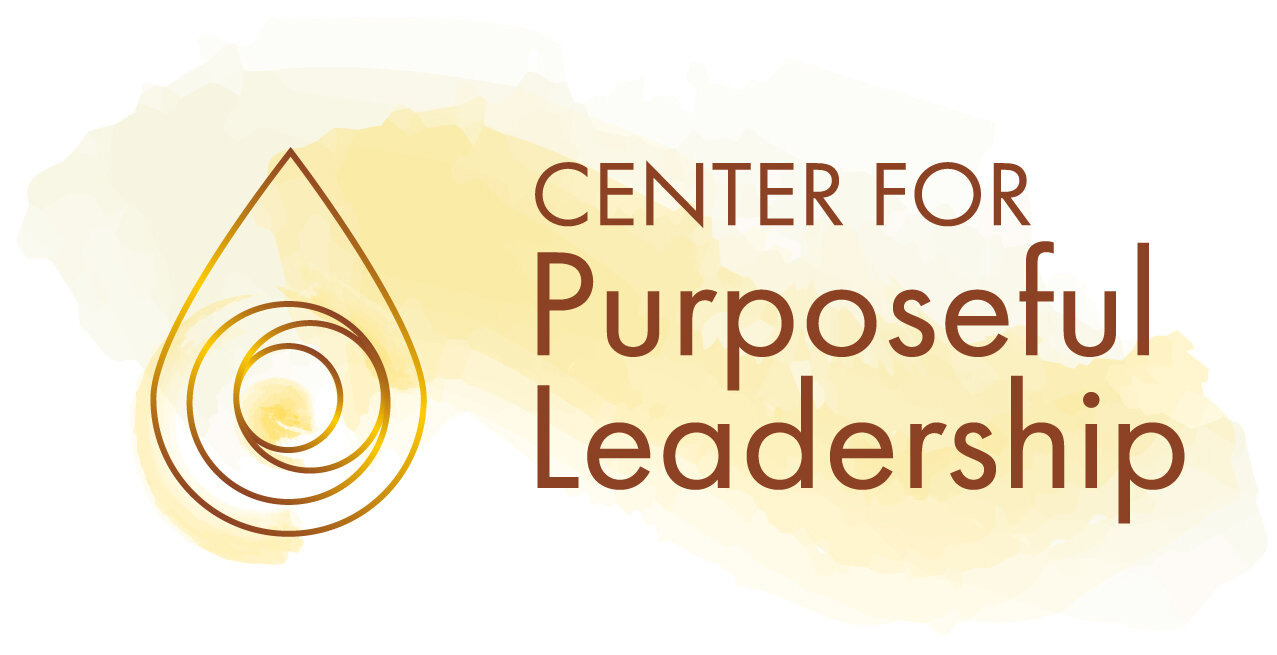







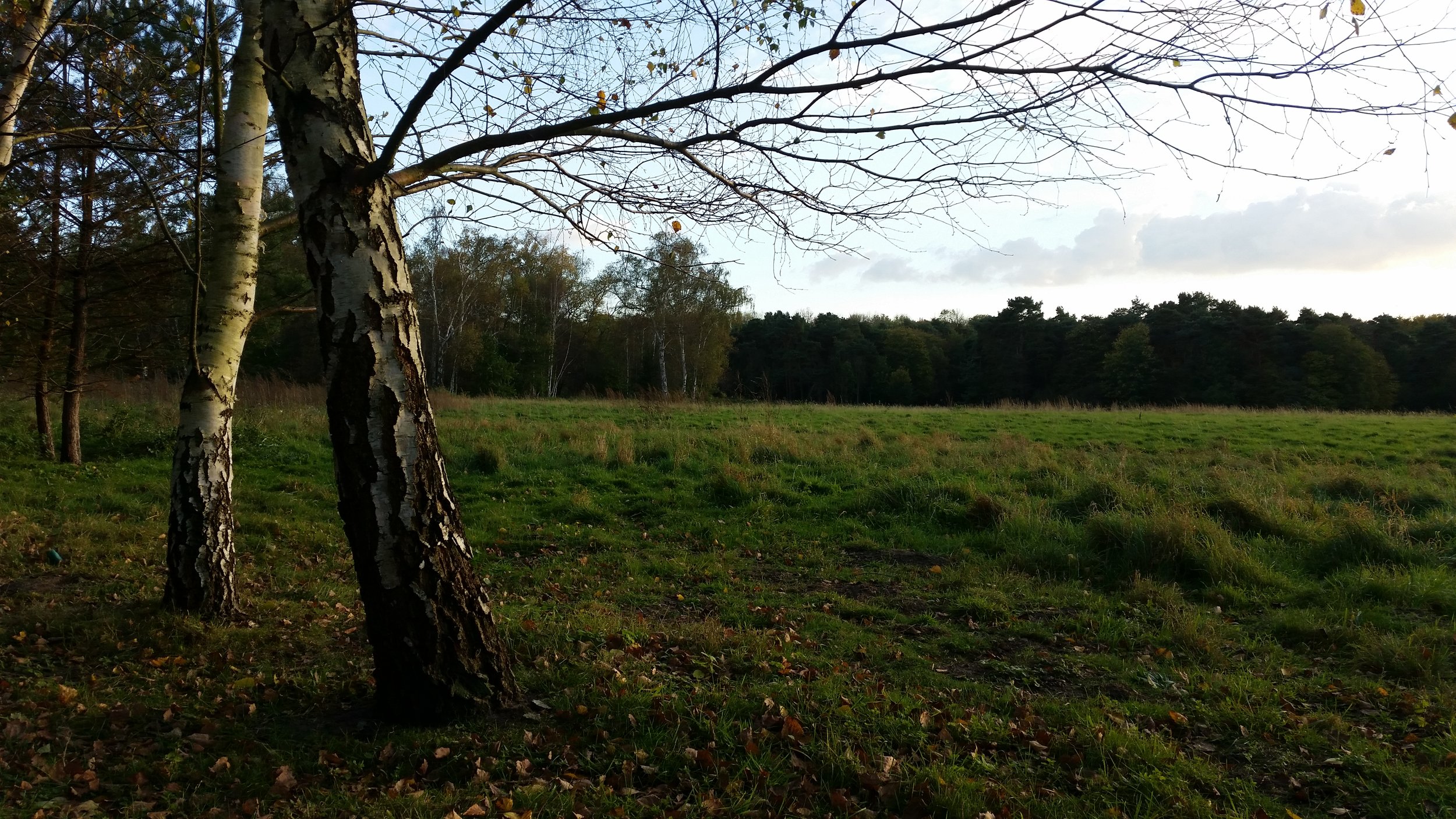
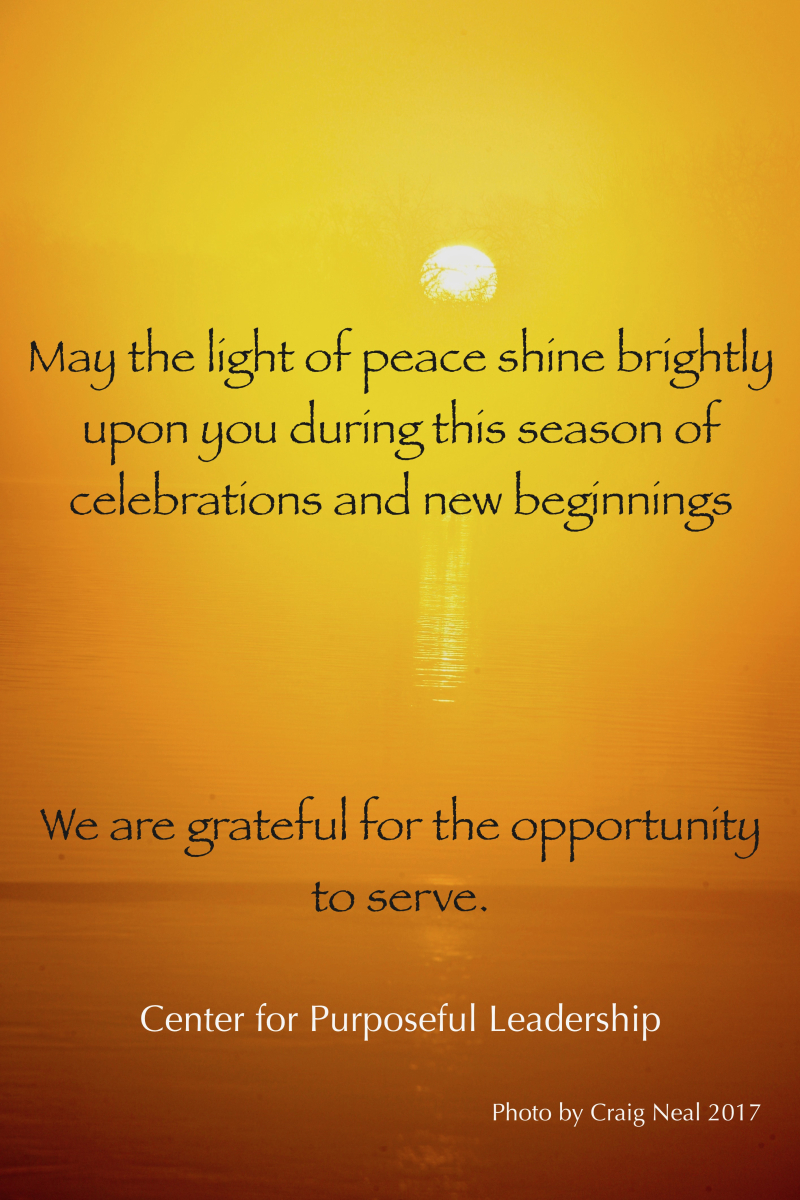


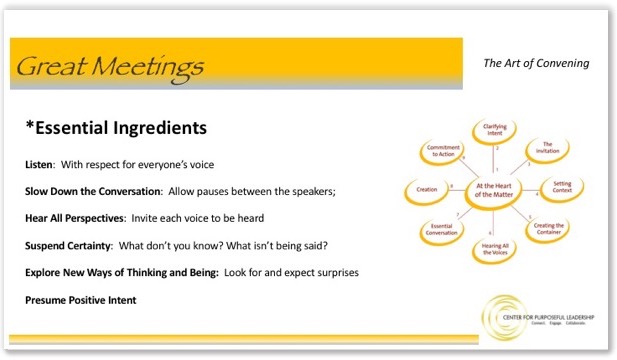










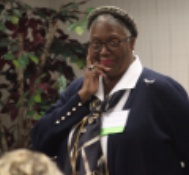

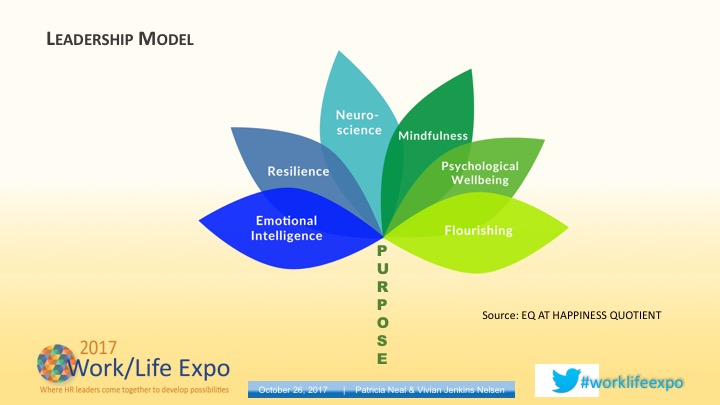




























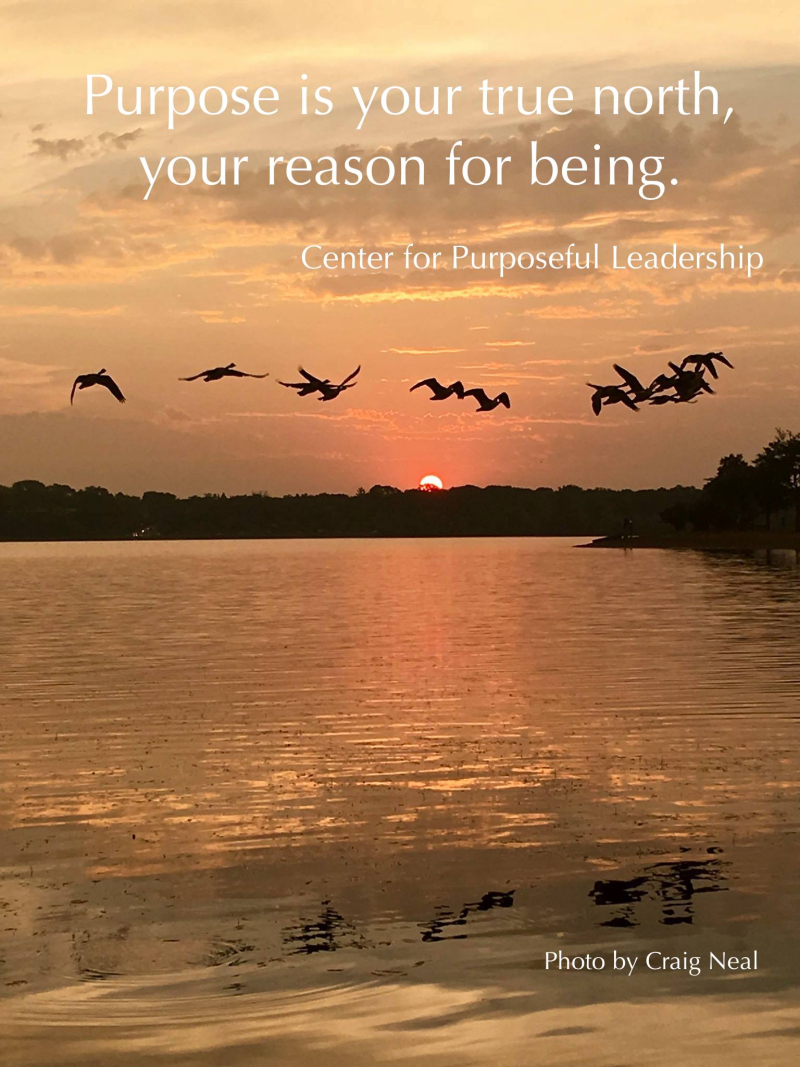





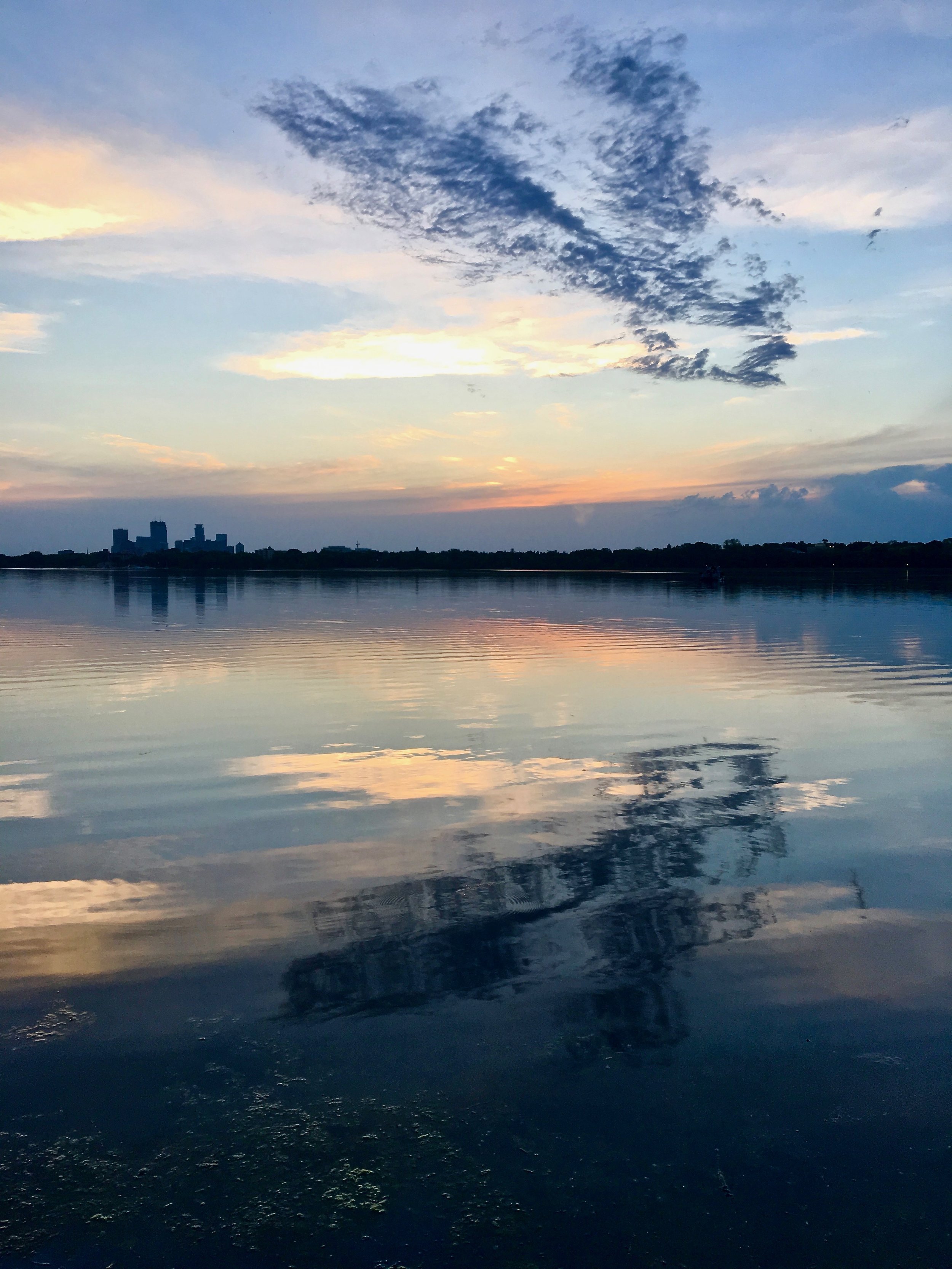










![[Hearth] Voices from Ukraine: Part 2](https://images.squarespace-cdn.com/content/v1/58a4e3be9de4bb98b066fd6f/1647955546471-VUGA4FCGFEUYJ29TEQVA/sunforest-mix-sunflower-types-1586794598.jpeg)

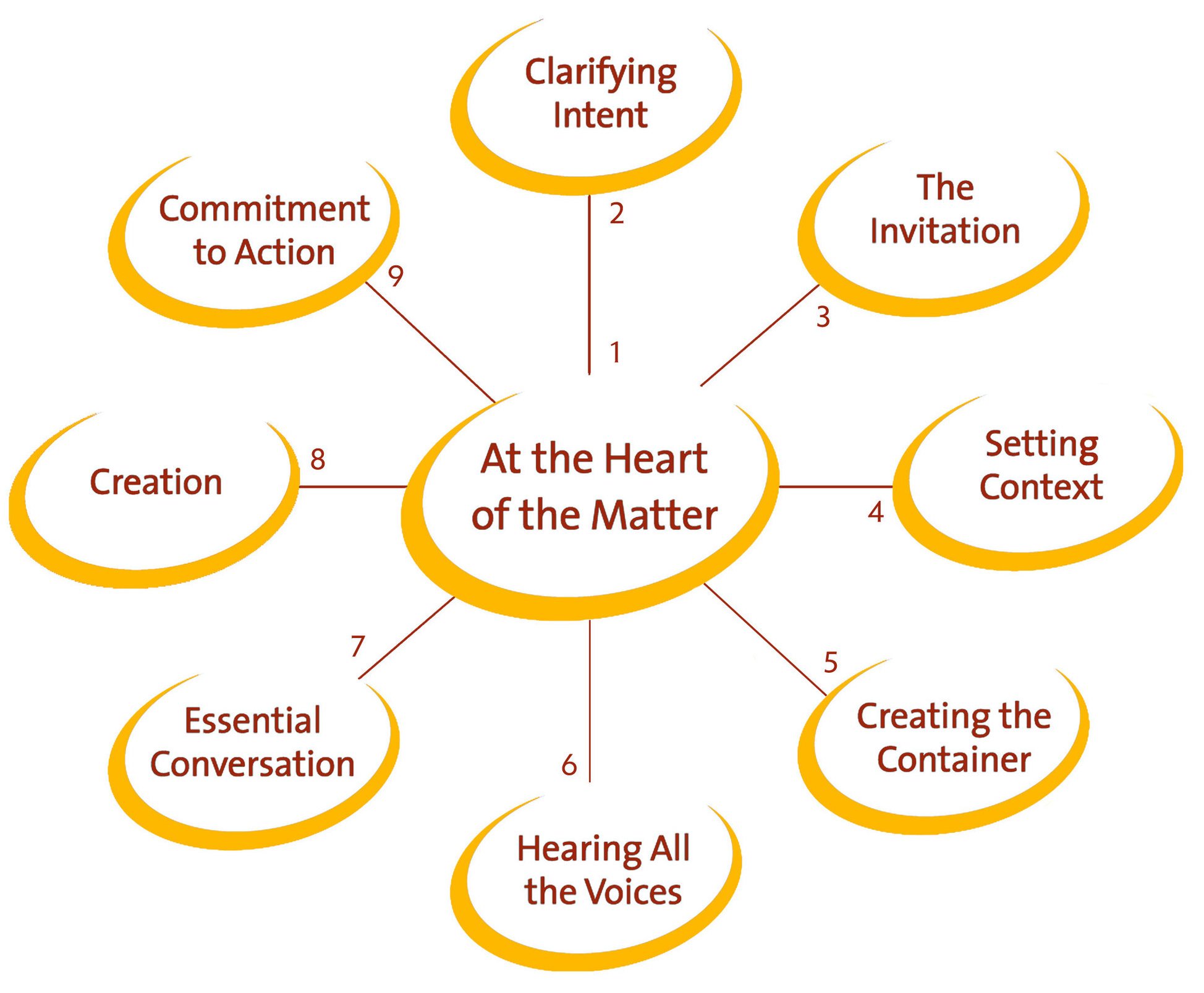

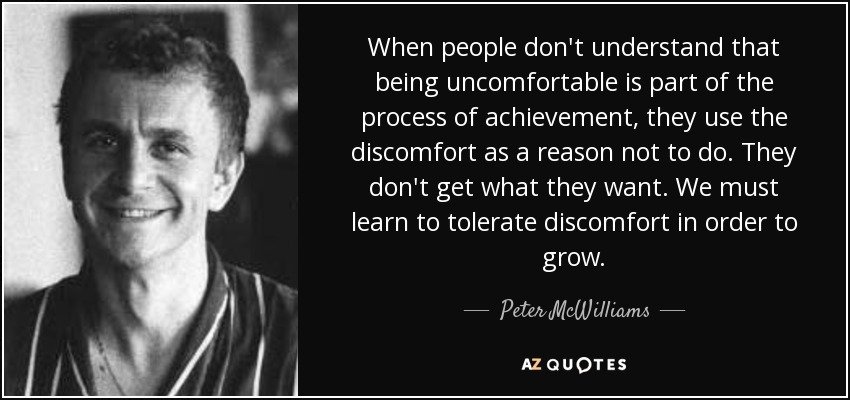
















NEW!! Art of Convening Self-Paced Leadership Course
Ignite Your Purpose Through the Power of Convening